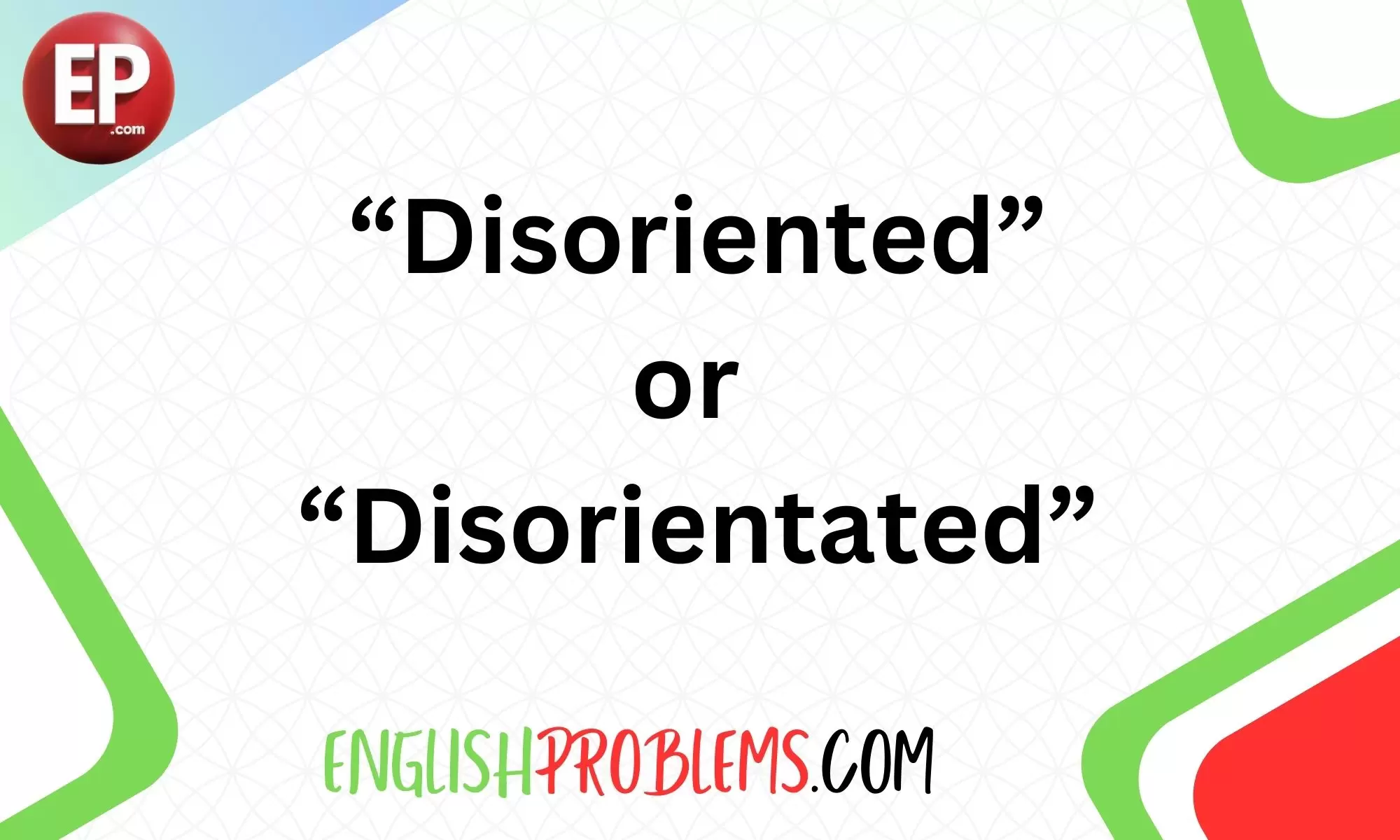Ever found yourself confused between using “disoriented” and “disorientated“? You’re not alone. Many people struggle with this pair of terms, which seem to mean the same thing but are used differently depending on where you’re from.
Understanding the subtle distinctions between these words can enhance your clarity in writing and communication.
In this comprehensive guide, we’ll explore the nuances of “disoriented” and “disorientated,” their historical roots, and how cultural differences influence their usage. By the end of this article, you’ll have a clear grasp of which term to use and when.
Understanding ‘Disoriented’ in American English
Disoriented is the term commonly used in American English. It refers to a state of mental confusion where one has trouble recognizing where they are or what’s happening around them.
Definition and Usage
In American English, “disoriented” describes a condition where someone feels lost or confused, often due to unfamiliar surroundings or a sudden change. It’s widely used in both formal and informal contexts.
Examples:
- After waking up from the anesthesia, she felt disoriented and had trouble remembering where she was.
- The hikers became disoriented in the dense fog and struggled to find their way back to camp.
Contextual Understanding
In American literature, media, and everyday conversation, “disoriented” is the preferred term. It seamlessly fits into various contexts, from medical descriptions to casual conversations.
Exploring ‘Disorientated’ in British English
On the other side of the Atlantic, British English prefers “disorientated.” Though it conveys the same meaning as “disoriented,” it’s less common in American usage.
Definition and Usage
“Disorientated” is used in British English to describe the same state of confusion and disarray. It is equally applicable in both formal and informal contexts but is less familiar to American speakers.
Examples:
- The people man was found disorientated after wandering away from his home.
- The complex instructions left many participants feeling disorientated.
Contextual Understanding
In British texts and speech, “disorientated” is the standard term. It’s prevalent in newspapers, books, and official documents across the UK.
The Historical Roots of ‘Disorientated’
Origin and Evolution
The term “disorientated” has its roots in the early 19th century. It evolved from the word “orient,” which originally meant to align or position something accurately. The suffix “-ated” was added to create the past participle form. Over time, “disorientated” became associated with confusion and a lack of direction.
Transition to ‘Disoriented’
“Disoriented” emerged as a variant in the early 20th century, reflecting a more streamlined American English approach. It dropped the “-ated” suffix, aligning with the trend toward simplified language.
Usage of ‘Disorientated’ in Literature
Literary Examples
“Disorientated” appears in various British literary works. Here are a few examples:
- Quote from a British novel: “He wandered through the fog, increasingly disorientated by the encroaching mist.”
- Quote from a British article: “The sudden changes in the plot left the readers feeling disorientated.”
Impact on Readers
In literature, the term “disorientated” can create a specific rhythm and tone that might resonate differently with British readers compared to American ones. It can evoke a sense of formality and tradition.
Disoriented vs. Disorientated: Cultural Perspectives
American vs. British Usage
In American English, “disoriented” is more streamlined and commonly used, while in British English, “disorientated” carries a traditional nuance.
Cultural Preferences:
- American English: Prefers simplicity and efficiency, hence “disoriented.”
- British English: Values historical and linguistic traditions, hence “disorientated.”
Regional Variations
Within English-speaking regions, “disoriented” and “disorientated” might be used interchangeably, but preferences vary. For instance, Canadian English often aligns with American usage, while Australian English might exhibit a mix of both terms.
Common Scenarios of Disorientation and Their Impact
Everyday Situations
Disoriented and disorientated can be used to describe a range of scenarios:
- Medical Conditions: After surgery, patients may feel disoriented or disorientated.
- Travel: Tourists in a new city might feel disoriented or disorientated due to unfamiliar surroundings.
Impact on Communication
Choosing the right term can affect the clarity of communication. In formal contexts or when writing for an international audience, it’s essential to use the term that aligns with the readers’ expectations and cultural norms.
The Linguistic Evolution of Disorientation Terms
Historical Linguistics
The evolution of “disoriented” and “disorientated” reflects broader linguistic trends. As language evolves, certain terms become more streamlined, while others retain historical forms.
Modern Trends
Today’s linguistic trends favor simplified terms. “Disoriented” is more commonly used in global English due to its brevity and ease of understanding.
Choosing the Right Term: Style, Rhythm, and Audience
Contextual Use
Disoriented is preferable for American audiences and informal contexts due to its straightforward nature. Disorientated may be used in formal British contexts or where historical accuracy is valued.
Writing Style
When writing, consider the style and rhythm:
- Disoriented: Fits a modern, streamlined narrative.
- Disorientated: Adds a formal or traditional tone.
Impact on Clarity in Communication
Importance of Accuracy
Using the correct term enhances clarity. Misusing “disoriented” and “disorientated” can lead to misunderstandings, especially in formal or international communications.
Practical Advice
- Know Your Audience: Choose the term that aligns with the cultural and linguistic expectations of your audience.
- Maintain Consistency: Use one term consistently throughout your writing to avoid confusion.
Final Thoughts: Embracing Linguistic Differences
Summary
In summary, “disoriented” and “disorientated” are terms that reflect regional and stylistic preferences. Understanding their usage can improve communication and ensure clarity.
Acceptance
Embrace linguistic variations and consider the preferences of your audience. Whether you use “disoriented” or “disorientated,” the key is to use the term thoughtfully and accurately to convey your message.
By following this comprehensive guide, you’ll be well-equipped to navigate the subtle differences between “disoriented” and “disorientated,” ensuring that your communication is clear, effective, and culturally appropriate.

Matthew Porter brings a wealth of knowledge and a vibrant enthusiasm for teaching English to the table. His innovative approach and creative explanations make even the most challenging language concepts accessible and fun. Matthew’s dedication to helping others achieve fluency is evident in every piece he writes.










